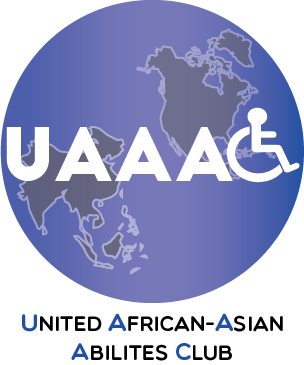This post provides a step-by-step review of
the most relevant sections of SB 251. The
SB 251 does not contain a purpose.
However, by reading the bill as a whole, UAAAC has determined that the
purpose is to stop ADA lawsuits. The
reason for this deduction is because by requiring written notice and allowing
the businesses to correct the violation, the lawyer will not need to file the
lawsuits. However, as noted below, the ADA lawsuits will continue because the
California legislature only has the power to reduce or to eliminate statutory
damages but it does not have the power to stop the lawyers from filing ADA lawsuits. This post does not explain why SB 251 may
violate the rights of people with disabilities. This post focuses on what
could be the practical approach of SB 251.
The outcome will not achieve the purposes of the author of SB 251. The constituents of the author will quickly
become dissatisfied with the outcome of SB 251 and will become dissatisfied with
the author.
UAAAC ANALYSIS OF
SB 251
A. A person must give written notice before filing a barrier
lawsuit. See amendment 7, Section 2(a). UAAAC opposes. For the purposes of this analysis, we ignore
the fact this section may violate the U.S. Constitution. Instead we focus on if
written will stop ADA suits. What would be the practical effect of SB 251? First, a lawyer will file a state lawsuit
without any damages allegations. Then he or she will serve the lawsuit with the
written notice. Thereafter the defendant must answer the lawsuit and correct
the violations within 30 or 90 days to reduce the damages. Further, most defendant
retain counsel. A simple cost analysis will force the defendant to litigate or
settle regardless of receiving written notice. Second, a lawyer files in
federal court for ADA only. BOTTOM LINE: Businesses will say SB 251 failed to
stop the ADA and demand that the Senate do more to stop said suits. However,
the State Senate cannot stop ADA suits.
B. A business will not be liable for violating the access
standards if it corrects the violations 90 days of getting the access
report. See amendment 7, Section 2(b).
UAAAC opposes. For a second, let us assumed that statutory damages are not
allowed at all, the ADA suits will continue. So reducing damages will not stop
ADA suits.
C. If a business corrects signage, painting of a parking lot
or truncated domes within 30 days of getting written notice then the business
is not liable for the violations. See
amendment 7, Section 2(b)(2). UAAAC opposes. Simply stated, a lawyer will
allege more substantial violations or reject the case. This section will not
work.
D. Section 3 repeats existing law - Plaintiff must
personally encounter a violation; or Plaintiff was deterred by the
violation. See amendment 7, Section
3(a-e). UAAAC supports.
E. Plaintiff's damages will be reduced to $1,000 if the
business corrects the violations within 60 days of receiving the complaint and
the property had a certified inspection, a certified inspection is pending or
the improvement was approved by a building inspector. See amendment 7, Section 3(f)(1)(A-D). UAAAC
opposes for the reasons already stated as to this section.
F. A plaintiff's damages will be reduced to $2,000 if the
business corrects the violation within 30 days of receiving the complaint and
it shows it corrected the violations and it has less 26 employees or it has
annual gross revenues of $3.5 million. See amendment 7, Section 3(f)(2)(A-B).
UAAAC opposes for the reasons already stated as to this section.
G. If a micro-business corrects the violations before
receiving a complaint it is not liable for any statutory damages. See amendment
7, Section 3(g). UAAAC opposes for the
reasons already stated as to this section.
I. The owner and tenant of commercial property are both
responsible for ADA compliance. The commercial must state this. See amendment
7, Section 4 UAAAC supports.
J. The certification for a certified access specialist will
last 3 years. See amendment 7, Section 3. UAAAC supports.
K. Expanding the duties of the California Commission On
Disability including the development of educational materials and a web site.
See amendment 7, Section 6. UAAAC opposes. Why are tax payers paying for this
agency? All its functions are or can be subsumed by other agencies.
L. Local governments must develop ADA materials to be provided
with approval permits. See amendment 7, Section 7. UAAAC opposes. ADA
information is free all over the Internet. Cities are struggling. Why should
cities the costs of gathering, organizing, printing and distributing ADA
information for businesses?
M. Article 4 defines terms.
UAAAC opposes all term definitions except 65946(1)(6). See amendment 7,
Section 8.
N. Provide tax
credits to businesses. See amendment 7, Section 9. UAAAC opposes. Why should
the State agree to allow tax credits for doing what the law has required for 40
years when the State is near broke?

No comments:
Post a Comment